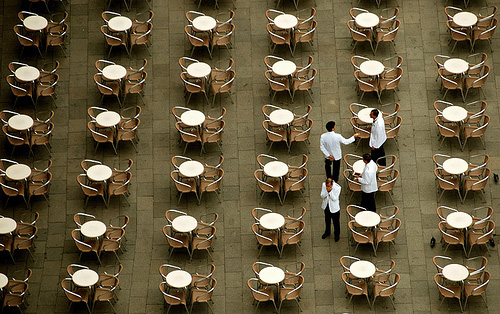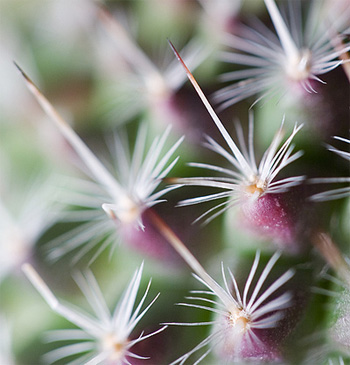By Wayne Turner
If you want to add a new dynamic to your photography then try adding pattern, form and texture. They will add a new depth to your images and help you rise to a new level in your photography.
1.Patterns
Patterns can be found everywhere, in nature and manmade constructions. They are made up of repeated objects, shapes or colours and whether they are random or ordered can be very pleasing to the eye. You can use patterns as the main subject of your photo with the focal point on the patterns. Or, you can use the patterns as a backdrop to something else.Sometimes the interest of a focal point is the break in a pattern. For example, a tray of eggs is great pattern of beige, uniform eggs in rows. Break one of the eggs in half and the yellow yolk will break the pattern and form a focal point. And of course remember the rule of thirds and the intersections, any break must be on an intersection.
Sometimes a pattern is not so obvious to the eye because of size. But starting looking at detail in your potential subjects by getting in closer and you see a world of patterns. A bright red fire engine may not seem to have patterns, but, get in closer to the grill or the weave of a hose and the world of patterns opens up. A keen observer will always find new patterns in old subjects.
2. Texture
While the structure of an object is its form, the material from which it is made constitutes its texture. To simplify it the texture conveys how the subject feels; is it hard or soft, smooth or rough. If you can convey these feelings then you are translating texture visually. Contrasting a smooth object and a rough one allows you to see texture. Again, getting in closer helps achieve this feeling as well.The angle of light falling on to the texture will lift it off the image and give it feeling. It’s best revealed by angled light coming more from the side, top or rear. Front lighting will make feel flat and uninteresting, although side lighting is the most popular way of revealing texture.
Shoot subjects like rope close up so that you can reveal the fibrous detail by isolating it from the other elements in the scene. If you really want to emphasize the effect of texture, angle the light more. This is achieved by shooting early morning and late afternoon.
3. Form
Shape is very two dimensional while form adds a third dimension because of the volume of an object. The eye is immediately drawn to form in an image and the art of creating this form is achieved by showing the contours of a subject. The human body as in a sumo wrestler, or the bold contours of round rocks on the seashore.Good side lighting early morning or late afternoon brings out the contoured form through shadow. Direct sunlight from above gives a very flat appearance to an image but when clouds pass over the sun form immediately rises and you have a perfect subject. Here’s a tip when trying to convey form in an image. Don’t stand front on parallel to your subject because all you tend to view is the shape without any form. Change your angle of view by moving around until shadow starts to reveal the form.
By learning to photograph texture, form and pattern correctly and adding these to elements to your images you will find that a new dimension will be added to your bag of skills and your photos will improve dramatically.
Do you want to learn more about photography in a digital world? I’ve just completed a brand new e-course delivered by e-mail. Download it here for free: http://www.21steps2perfectphotos.com/ To learn how you can take your photography from ordinary to outstanding visit http://www.21steps2perfectphotos.com/21steps.htm




No comments:
Post a Comment